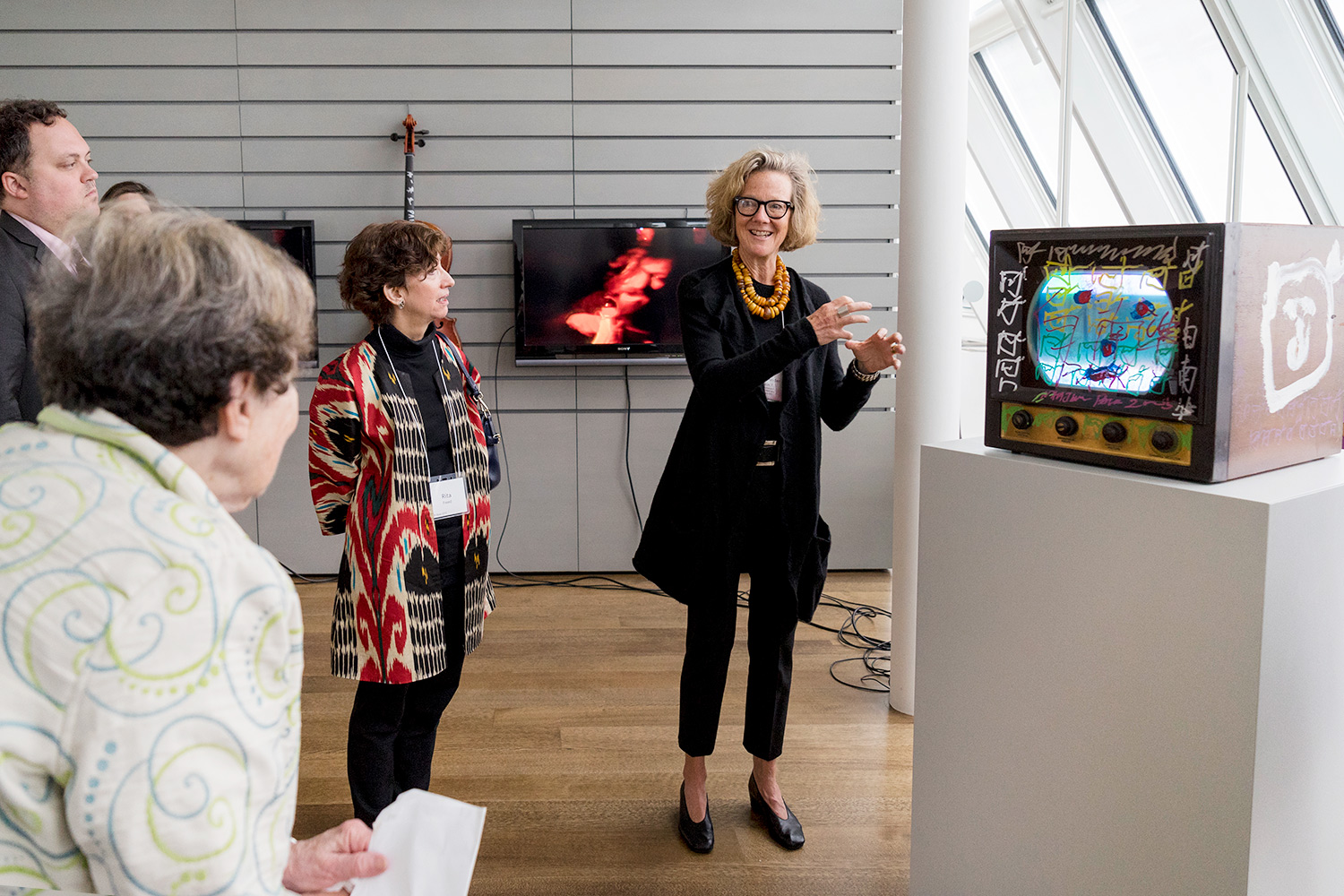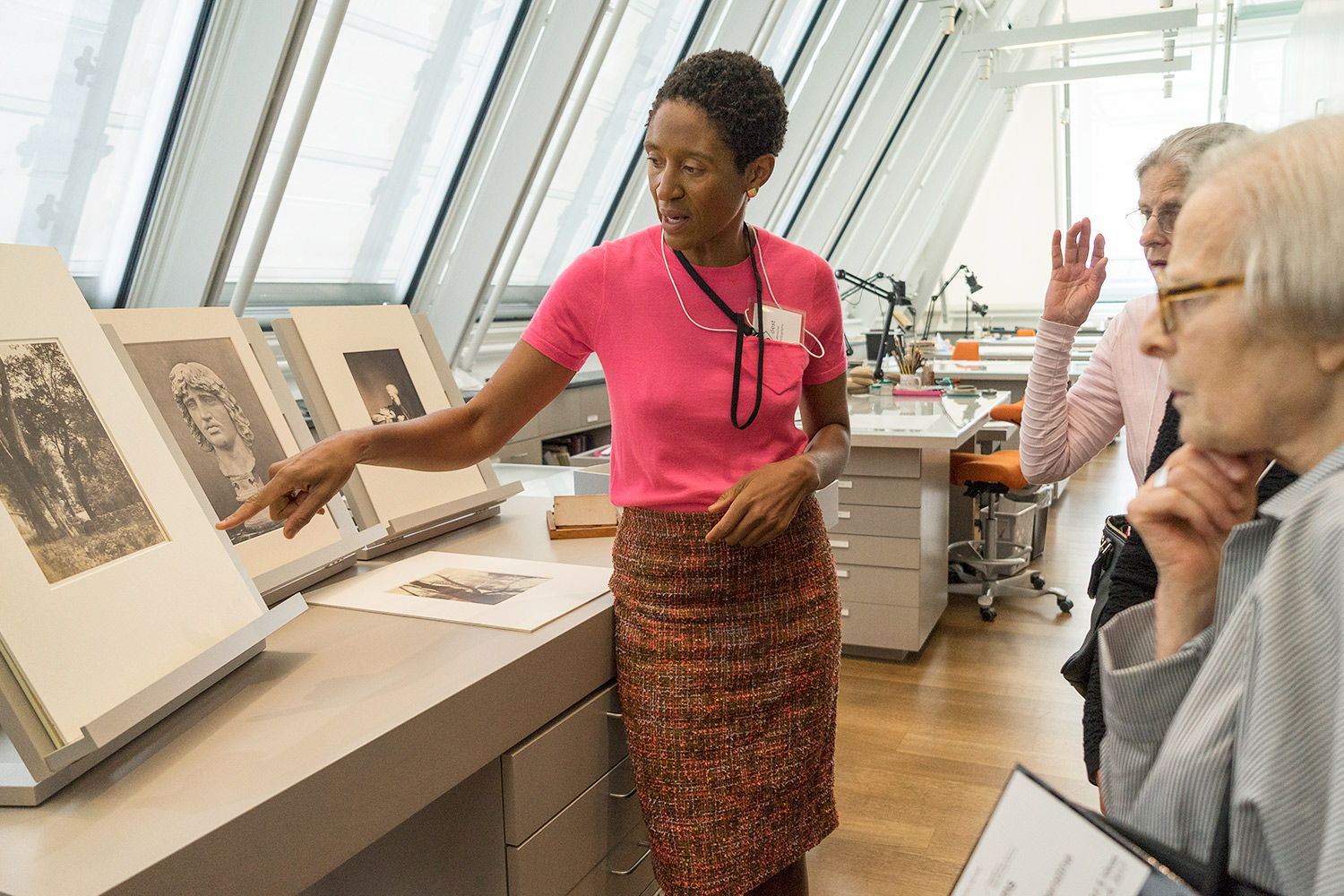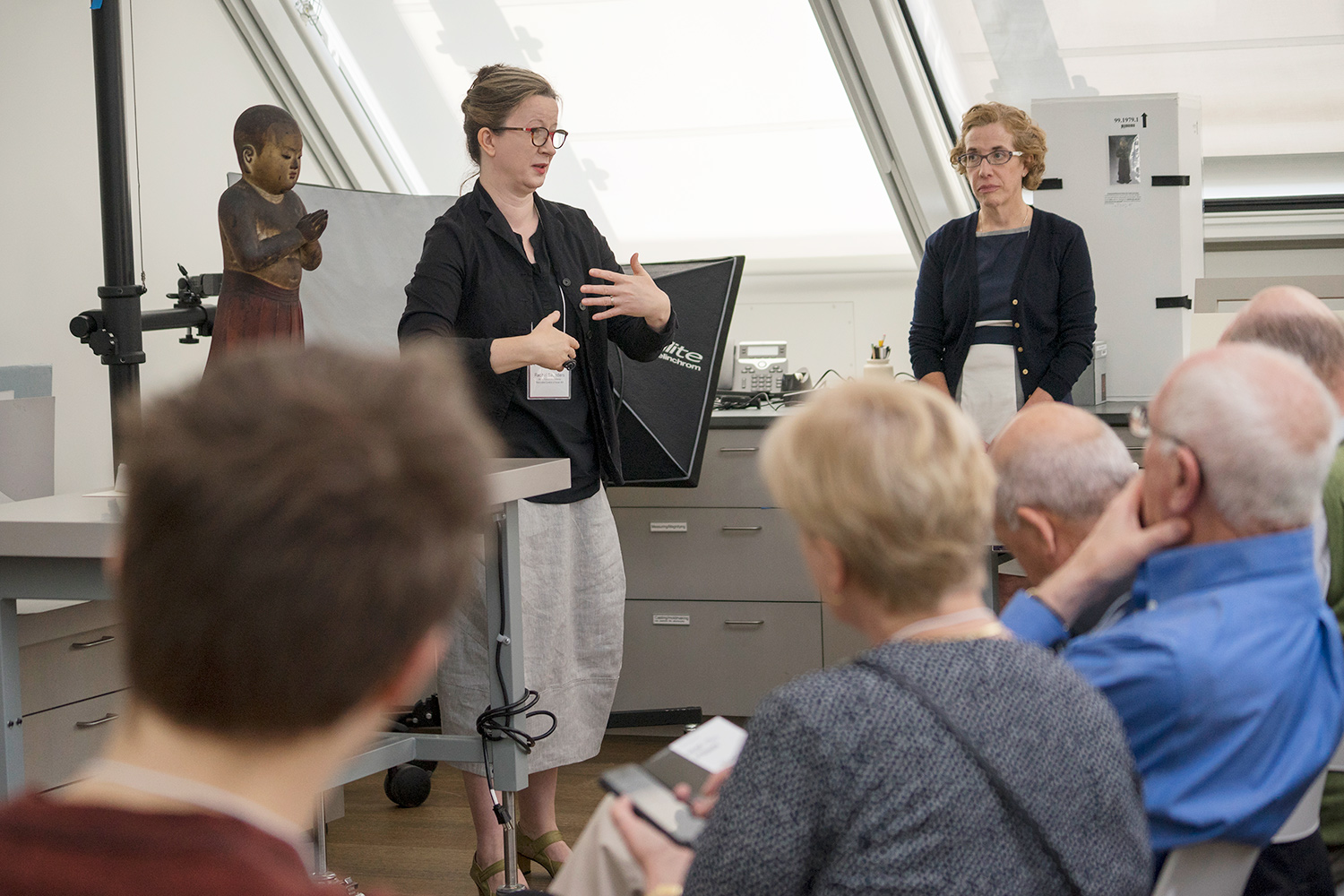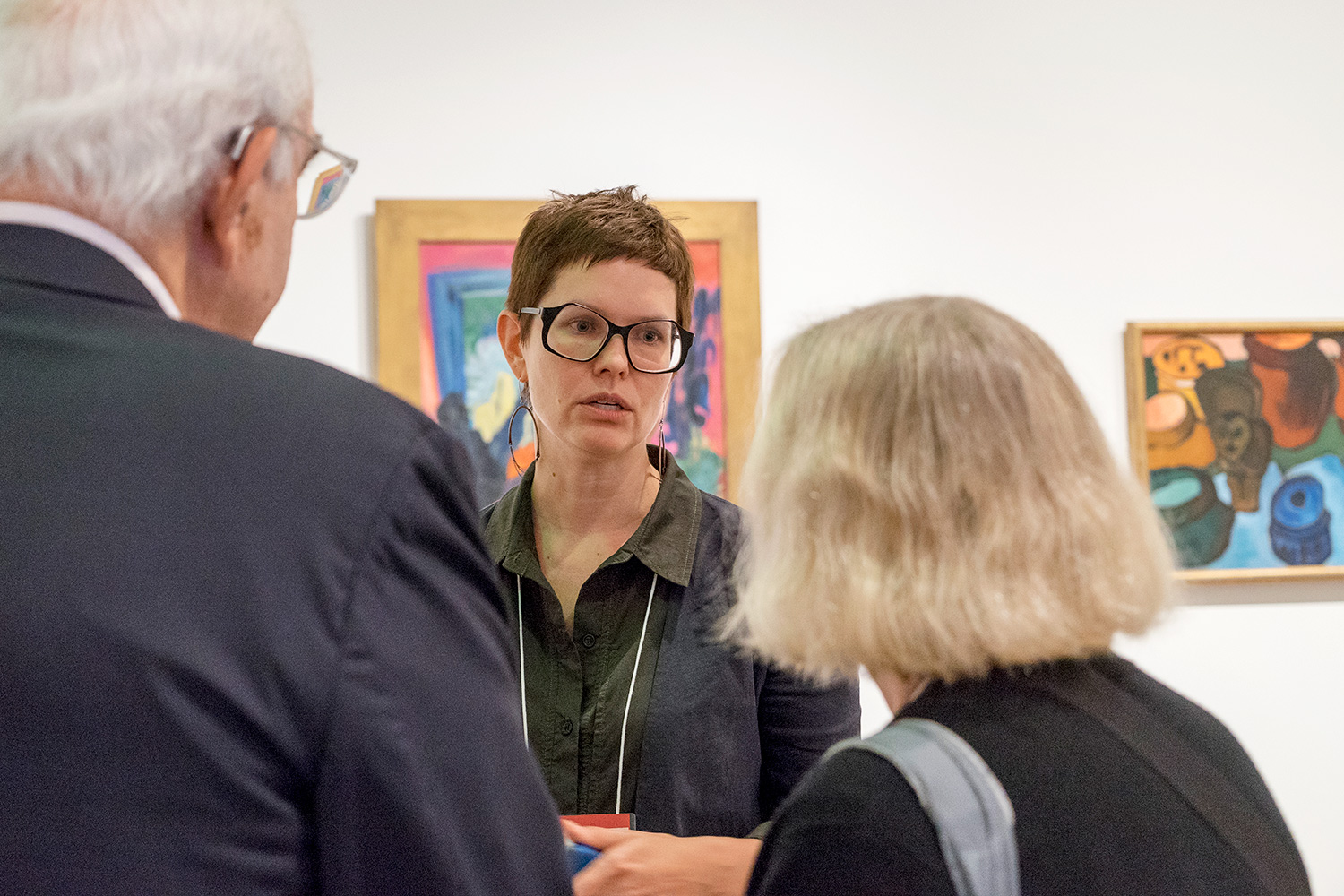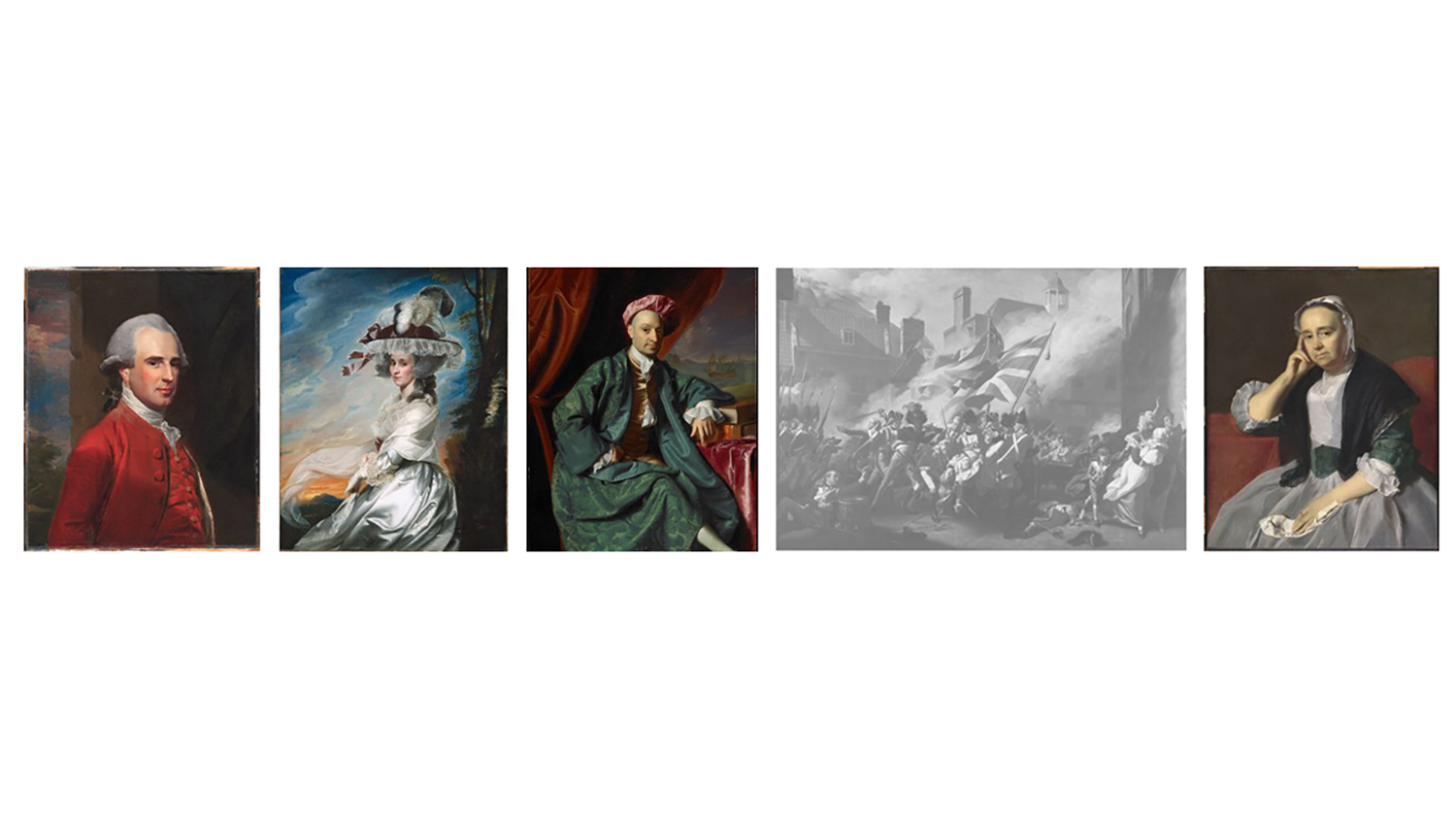Our accomplished curators know an astonishing amount about the works of art in their care. But with more than a quarter of a million objects in the Harvard Art Museums collections, it's a challenge to take stock of the collection as a whole.
A Clearer View of the Collections
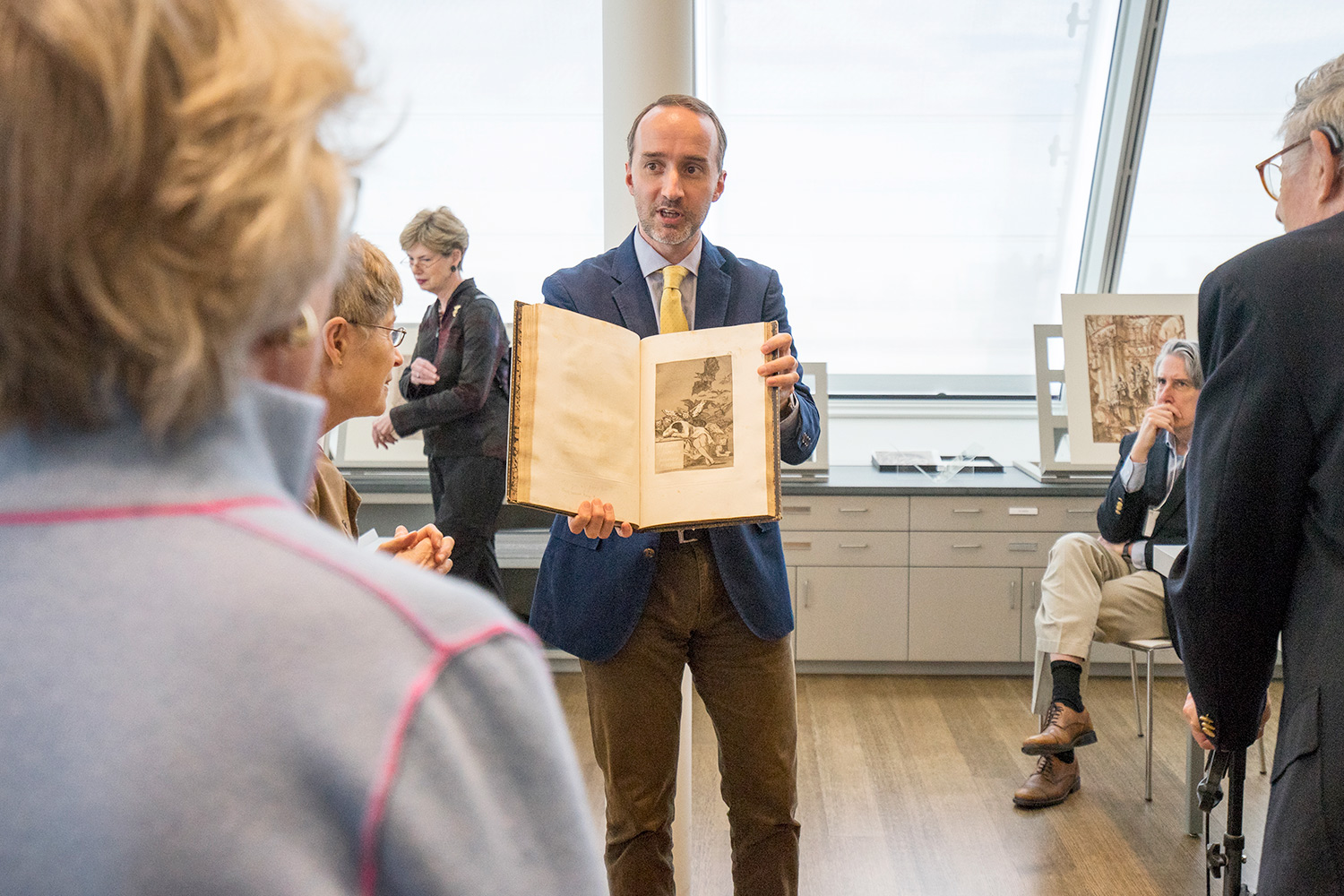
With leadership from Martha Tedeschi, the museums’ Elizabeth and John Moors Cabot Director, the curatorial staff recently got the chance to gain a deeper understanding of our holdings. Over the course of a year, curators undertook a comprehensive assessment of the collections in their respective divisions (Asian and Mediterranean Art, European and American Art, and Modern and Contemporary Art). The result was that the complete holdings of the institution’s three constituent museums—the Fogg, Busch-Reisinger, and Arthur M. Sackler—were analyzed.
“The last time this type of assessment was conducted was in 2008, and since then we’ve had a number of new curators join us,” said Ethan W. Lasser, the Theodore E. Stebbins Jr. Curator of American Art and head of the Division of European and American Art, who managed the project. “This survey was especially important because it allowed us all to assess our strengths and weaknesses, and also to think about our collection-building goals for the future.”
Each curator pored over lists of objects in databases and viewed a large number of objects in person, obtaining a more clear-eyed view of the many works under their stewardship. The work of identifying collection strengths and areas for further development required sustained, strategic thinking—a focused effort that will pay dividends, Lasser said. The details will inform the museums’ current and future collecting strategies and will also guide the work of the committees, which will be relaunched in the new year and whose members lend guidance and expertise to the curatorial staff.
The curators were able to share their findings and recommendations in brief presentations and longer breakout sessions during the second annual Art & Ideas event, which was held in October to welcome friends and supporters of the museums. Besides outlining ambitious goals for expanding and enhancing their collections, curators revealed a few surprises.
For instance, Lynette Roth, head of the Division of Modern and Contemporary Art and the Daimler Curator of the Busch-Reisinger Museum, told visitors that three-quarters of the Busch-Reisinger Museum’s collection in all media relate to the Bauhaus and its legacy in the United States. The Bauhaus collection—accessible digitally—is the largest such archive outside of Europe. In 2019, the 100th anniversary of the Bauhaus’s founding, the museums will present a special exhibition showcasing some of these remarkable works.
Lasser informed the group that the museums can represent almost every phase in John Singleton Copley’s career. As one of the artist’s earliest patrons, Harvard University collected Copley works in a variety of media (from oil paintings to mezzotints), from most periods of the artist’s career, and in nearly every genre. Notable works include Copley’s first full-lengths and his exquisite portrait of Nicholas Boylston (most recently displayed in the Philosophy Chamber exhibition). However, Lasser said, “if we were to acquire a great history painting, that would put us on the map as holding one of the most comprehensive Copley collections in the world.”
Curators also announced new and exciting ways that they are working together to expand the collections. The South Asian Photography Initiative, funded with vital support from José Soriano and Conley Harris, is one example. Jointly overseen by Mary McWilliams, the Norma Jean Calderwood Curator of Islamic and Later Indian Art, and Makeda Best, the Richard L. Menschel Curator of Photography, the initiative extends the collections’ global reach in contemporary holdings, with a growing repository of 100 works by 15 Indian and South Asian photographers. Works by preeminent artists, such as Raghubir Singh’s Mango Season, Crawford Market, Mumbai, Maharashtra (1993), as well as those by emerging artists, are included in this important project. In the coming years, curators plan to broaden the scope of the project to include works by artists in the Middle East and North Africa.
Another key fact that emerged during the program was how many of our most iconic works—including Jean-Auguste-Dominique Ingres’s Raphael and the Fornarina (1814), Vincent van Gogh’s Self-Portrait Dedicated to Paul Gauguin (1888), and John Singer Sargent’s The Breakfast Table (1883–84)—were added to the collections by generous donors. Historic and well-known gifts include the Maurice Wertheim Collection (bequeathed in 1951) and the Grenville L. Winthrop Collection (donated in 1943). These gifts were transformative in the impact they had on the museums’ collections, in areas as diverse as ancient Near Eastern art (Winthrop), 19th-century American and European art (Winthrop), and French impressionist and postimpressionist art (Wertheim).
Among recent examples is the promised gift (announced in 2013) of the Robert and Betsy Feinberg Collection, which has given the museums the opportunity to exhibit and study approximately 300 works of Japanese art, including screens, hanging scrolls, books, fans, and more, from the Edo (1615–1868) and Meiji (1868–1912) periods. A 2016 gift from Ken Hakuta, the nephew of Nam June Paik, of approximately 10 works by Paik—along with funds to establish the Hakuta Family Endowment Fund, enabling the creation of the Nam June Paik Fellowship—will enhance the study of mid-20th-century art, video art, and related subjects.
These “peerless collections,” in Tedeschi’s words, have elevated the museums’ holdings and immeasurably enriched our ability to pursue our teaching and learning mission. “In many ways,” Tedeschi said, “we are a collection of collections. And these collections allow us to take very seriously our commitment to educating and training the next generation.”
